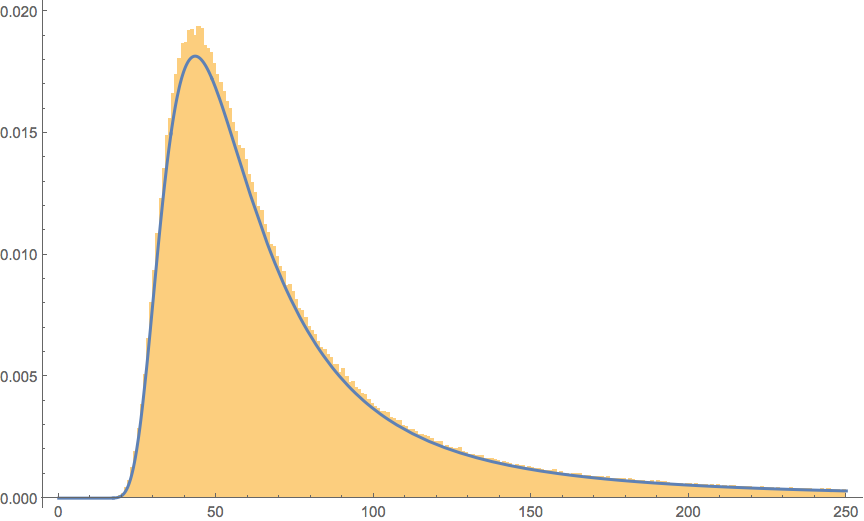I'm rather new to Mathematica having been a longtime Matlab user, so apologies if my question is framed incorrectly or I have missed out expected infomation. I have tried to distill the problem to the essentials.
Effectively I am trying to plot a a transformed distribution in a similar fashion to this example code:
data = RandomVariate[NormalDistribution[6, 5/3], 10^6];
Show[Histogram[data, Automatic, "PDF"],
Plot[PDF[NormalDistribution[6, 5/3], x], {x, 0, 14},
PlotStyle -> Thick]]
I have create a transformed distribution, sampled some data from it using RandomVariate and plotted it in a histogram.
hiod = 6.5/2;
transDistrib =
TransformedDistribution[hiod/Tan[theta*Degree],
theta \[Distributed] NormalDistribution[6, 5/3]];
dataTrans = RandomVariate[transDistrib, 10^6];
Histogram[dataTrans, {0, 80, 1}, "PDF", ImageSize -> Large ]
This works as expected (I have done the same thing in Matlab). However, the equivalent generation of a PDF fails (code just hangs and aborts).
Plot[PDF[transDistrib, x], {x, 0, 80}, PlotStyle -> Thick]
I get the distinct feeling I an making a terribly simple error, either in my basic coding or understanding of how to represent probability distributions in Mathematica.
Ultimately I would like to derive the equation for the transformed distribution, but I have stumbled at this earlier stage using Mathematicas inbuilt functions.
Any pointers to solving my error would be greatly appreciated. I'm using Mathematica 11.0.1 on macOSX Sierra.






hiod? Here it is underfined, thereforeTransformedDistributionalso remains unevaluated. $\endgroup$Tanas @NicholasG suggests is an issue. You don't have a simple one-to-one function. You should look up "wrapped normal" to see that when you restrict the angles you're feeding to your function to range from say 0 to $\pi$ radians (or 0 to 180 degrees), the resulting density of that random variable has an infinite number of terms. But because you'll then have a one-to-one function, you can likely get an algebraic form for the density of the transformed variable but it will almost certainly have an infinite number of terms. $\endgroup$